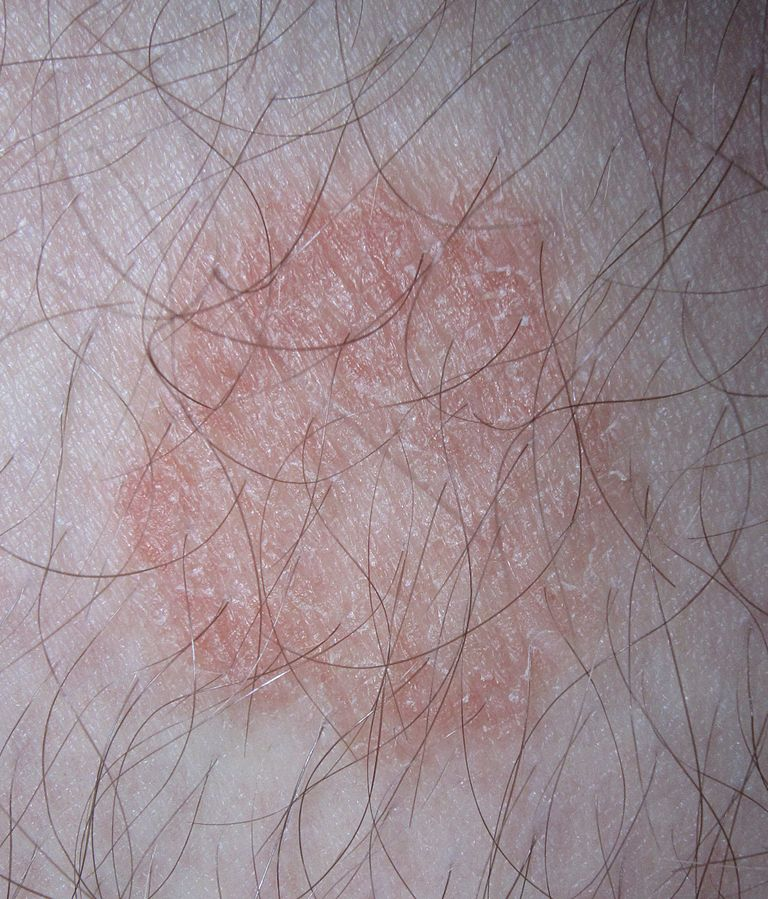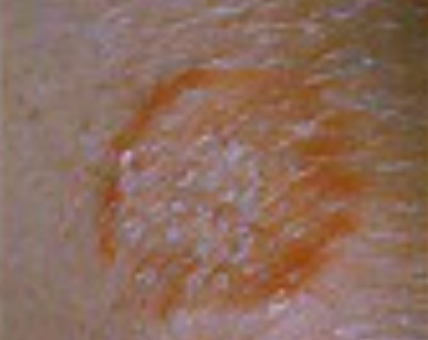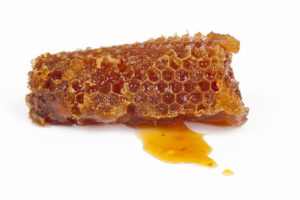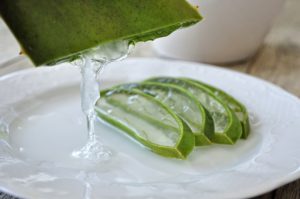Natural Treatments for Ringworm and Athlete’s Foot

Topical fungal skin infections like ringworm and athlete’s foot are incredibly common. Estimates suggest that at any given time 20% of the world’s population has a topical fungal skin infection (Havlickova 2008). These infections usually occur on the feet, groin, scalp and nails. While caused by the same fungal organisms, infections of the scalp and nails are more complex to treat.
Fungal skin infections on the body are called ringworm. On the feet, they are referred to as athlete’s foot. The causative organism is usually a dermatophyte, a type of mold that consumes keratin, a protein found in hair, skin and nails. Several risk factors can increase the incidence of fungal skin infections, including excess sweating, occlusive clothing, use of communal bath and shower facilities, contact sports, lowered immune function and exposure to animals.
Symptoms
Ringworm usually forms a circular patch that is red and inflamed at the edges with a central clearing. The infections itch, often with burning pain. They can occur anywhere on the body, but are usually found in places associated with excess sweating.
Topical Treatments
Several natural and integrative treatments appear to have potential for fungal skin infections, although research is surprisingly limited:
- Tea tree oil
- Silver nanoparticles (colloidal silver)
- Zinc oxide
Tea Tree Oil
Tea tree oil is an essential oil derived from the leaves of Melaleuca alternifolia, a tree from Australia. A study in horses with ringworm showed all of the treated animals had no evidence of a continuing fungal infection at 30 days with tea tree oil treatment. The animals were treated with a 25% dilution of tea tree oil in sweet almond oil twice daily for 15 days (Pisseri 2009).
An earlier human trial found a 64% cure rate with a 50% tea tree oil for athlete’s foot. Patients applied the oil twice daily for four weeks (Satchell 2002). A number of additional studies have also shown that tea tree oil is effective for killing dermatophytes, the organisms responsible for ringworm (Roana 2021, Hammer 2002, Concha 1998).
While typically safe, in rare cases, tea tree oil has been associated with enlargement of breast tissue—gynecomastia—in prepubertal boys (Hawkins 2020). While the evidence is not robust, caution is warranted for its use in this age group. Tea tree oil has also occasionally been associated with skin irritation.
Silver Nanoparticles (Colloidal Silver)
Colloidal silver is a product that often gets recommended as a cure for almost anything. And while a lot of confusion exists around colloidal silver, when produced properly, it is a suspension of silver nanoparticles in water. Silver has a long history of use as an antimicrobial. And the latest research shows that silver nanoparticles have antifungal properties effective against dermatophytes (Mahmoudi 2021, Robles-Martinez 2019). The nanoparticles have also been shown to be non-toxic to skin cells (Ronavari 2018), although they may not be effective against all fungal species (Amin 2017, Wypij 2017).
It’s also worth noting that the size and shape of silver nanoparticles can vary based on the production technique. Different sizes and shapes have different antimicrobial effects and different levels of safety (Liao 2019). Therefore, different products can have vastly different effects in real-world situations. While initial research is promising, clinical trials for silver nanoparticles are needed to fully assess their efficacy for fungal skin infections.
Zinc Oxide

Zinc oxide is a natural mineral often used in nutritional supplements and sunscreens. Zinc oxide creams are known to possess anti-inflammatory and wound healing effects along with antimicrobial activity (Agren 2021, Riduan 2021). In my own experience, zinc oxide creams are almost magical in how quickly they speed up healing from simple skin injuries.
Like silver, the smaller the particles of zinc oxide, the easier they can penetrate the skin and target a fungal infection. Studies have found that nanoparticles of zinc oxide are effective against a number of different fungal organisms that cause skin infections in both humans and animals (Dobrucka 2017, Tiwari 2017, El-Diasty 2013). Like with silver, direct clinical trials are lacking, although considering the research and their broad use in numerous commercial products, including sunscreens, zinc oxide appears to be safe for topical use.
Conclusions
In writing this article, I was somewhat surprised by the lack of clinical trials exploring more natural approaches for treating ringworm and athlete’s foot. These infections are incredibly common. As such, more research is desperately needed. Used properly, the potential treatments listed above appear to be safe. However, additional clinical trials could help us to better understand their overall efficacy.



